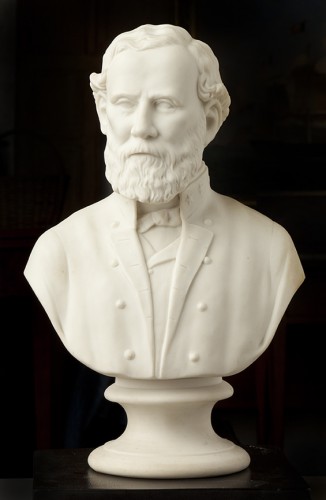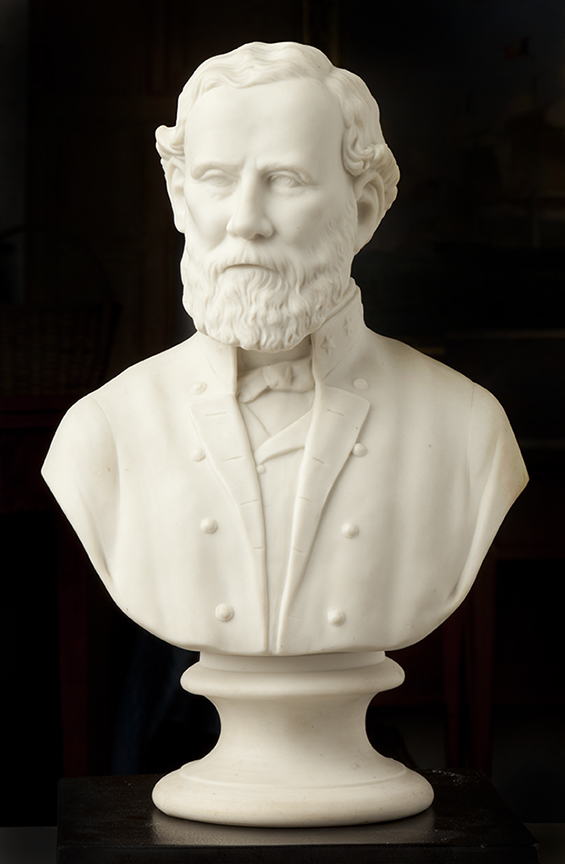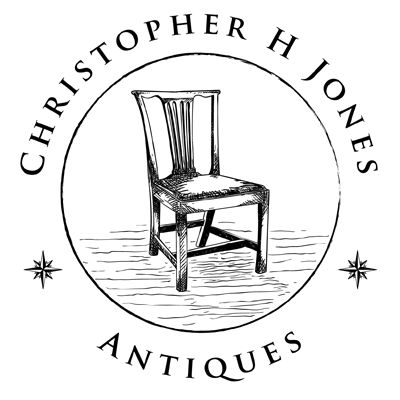 Sculpture Bust of Confederate General Robert E. Lee.
Sculpture Bust of Confederate General Robert E. Lee.
Porcelain (Parian), 13” high, on a wood platform.
Inscribed “General Lee/by Morris/J&TB 399.”
James and Thomas Bevington, Hanley, England; 1863-1876
Commentary: This sculpture of the Confederate General Robert E. Lee is marked “J&TB” for James and Thomas Bevington of Hanley, Staffordshire. James (b. 1843) and Thomas (b. 1845) were the sons of Samuel Bevington (1808-1863) who sired a family of prolific potters; between the father and seven sons, the family owned or worked 12 potteries in Hanley. The partnership of James and Thomas lasted from the death of their father in 1863 until 1876. It was during this period of the brothers’ partnership that the Lee statue was manufactured. James and Thomas operated three works, on Marsh Street, Burton Place and Cannon Street in Hanley. During the years of their partnership, parian ware was at the height of its popularity, and the brothers specialized in parian statuettes for both domestic and foreign markets. After the partnership dissolved, both brothers continued in the business, operating separate pottery ventures in the area.
The modeler for the statue of General Lee was a sculptor for the Bevington brothers, known only by his mark on the reverse, “Morris.”
Parian ware grew out of earlier forms of biscuit porcelain and was developed to imitate the smooth surface and warmer hue of fine marble. First used in Staffordshire, England in the early 1840’s, within several years it was used by many different potteries in the area (Copeland, Wedgewood) under different names. The Minton pottery first used the term “parian” to suggest Paros, the Greek Island that furnished stone for much of the Greek statuary in the classical period. Parian was extremely successful in Victorian England, representing a low-cost alternative for small statuary and allowing middle class customers to furnish their parlors with respectable portrait busts. Parian ware was popular in America for the same reasons, and there were several factories producing it in Bennington, Vermont, and New York.
Clearly, this sculpture was made for export to the American market. General Lee was widely hailed as a hero in the south during the war, particularly after the death of Stonewall Jackson; his astute generalship was a crucial moral factor for the South. He remained a popular figure after the surrender of the Confederate Army at Appomattox and after the war, emerged as the supreme Confederate symbol.
Price: Sold


